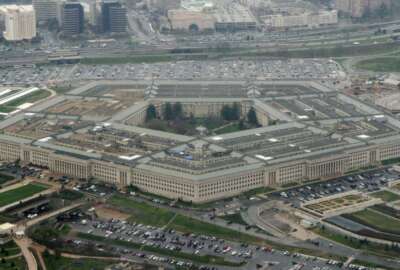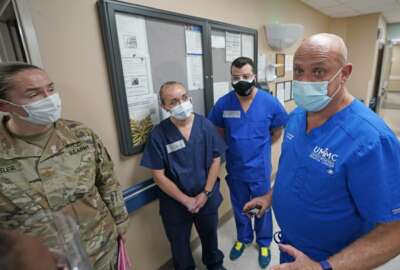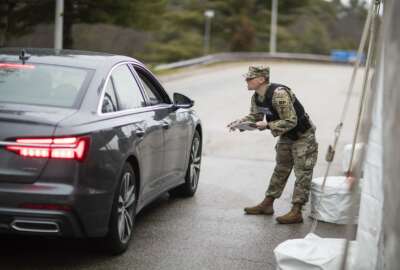
Coronavirus is shaping military medicine for the future
For the military, the pandemic is starting to echo lessons of war and shape the defense medical system in new ways, just as conflicts did in the past.
For the military, the coronavirus pandemic is starting to echo lessons of war and shape the defense medical system in new ways, just as conflicts did in the past.
In the 2000s, military medicine had to learn on the fly how to deal with injuries from improvised explosive devices. The Defense Department put more resources into stopping bleeding, saving limbs and treating brain injuries. Those resources led to innovations and changes in medicine.
Now, the coronavirus is doing the same thing. As the rate of service members getting COVID-19 continues to outpace civilian percentages, doctors are rushing to find therapies, prevention methods and better ways of tracing.
As of Monday, 36,659 people related to DoD were infected with coronavirus and 25,590 of them were service members. More than 10,000 service members have been infected in the last three weeks.
The Defense Health Agency is working to find new forms of treatment for service members and civilians.
“During the long wars in Afghanistan and Iraq, the Military Health System (MHS) adapted rapidly to develop new medical products, new systems of care and did so in order to achieve historic rates of survival from combat,” Dr. Simon Pincus, chief of Connected Health at DHA, told reporters Monday. “In 2019, the same system, the MHS really pivoted quickly to use those same attributes to support the national and international response to stop COVID.”
Air Force Col. Todd Rasmussen, associate dean for research at the Uniformed Services University, said the military found new uses for its Joint Trauma System (JPS), a registry that aggregates casualty care epidemiology. It was originally created to help with combat wounds.
“Almost immediately in 2020, when the MHS needed a go-to organization to begin to gather data on, of all things, not combat injuries, but of COVID positive patients,” he said. “We went to the JPS because they had a registry that allowed us to, to look at and gather real world data sort of near real time data on these cases. They have a global network of performance improvement and care Improvement where we discuss care and how to best diagnose and treat patients with COVID.”
Doctors all around the world are sharing how to take care of patients with COVID through the system.
“We encourage innovation and I’m seeking innovative ideas, techniques, devices and approaches to the way we deliver health care,” Rasmussen said.
One innovation that was put to use almost immediately is the COVID-19 Airway Management Isolation Chamber (CAMIC).
“In mid-March, after some brainstorming, we came up with a simple device, the CAMIC, which was a low cost, $15, and easy to build with materials very ubiquitous to every healthcare system and community,” Dr. Steven Hong, assistant professor of surgery at the Uniformed Services University said.
It is the only Food and Drug Administration-approved personal protective equipment with a negative pressure vacuum that can reduce airborne particles. It’s basically a small, negative pressure tent that goes over a patient’s head and chest.
Pincus said there are also more negative parallels between COVID treatment and combat treatment.
“One of the issues when you’re a provider of healthcare in combat is you’re also not going home from the trauma that you see,” he said. “You’re actually potentially at risk of being a victim of trauma. This is kind of similar to COVID-19, where the providers are going on the front lines in health care teams, they’re taking care of patients, but then they’re also at risk for the same outcome. They can be infected with COVID-19 or come home and bring that home, they might have elderly parents, and so forth.”
The military created a suite of self-care apps to help providers identify burnout and decompress. They include meditation apps and apps that help identify when a provider might need a break.
Copyright © 2025 Federal News Network. All rights reserved. This website is not intended for users located within the European Economic Area.
Scott Maucione is a defense reporter for Federal News Network and reports on human capital, workforce and the Defense Department at-large.
Follow @smaucioneWFED






